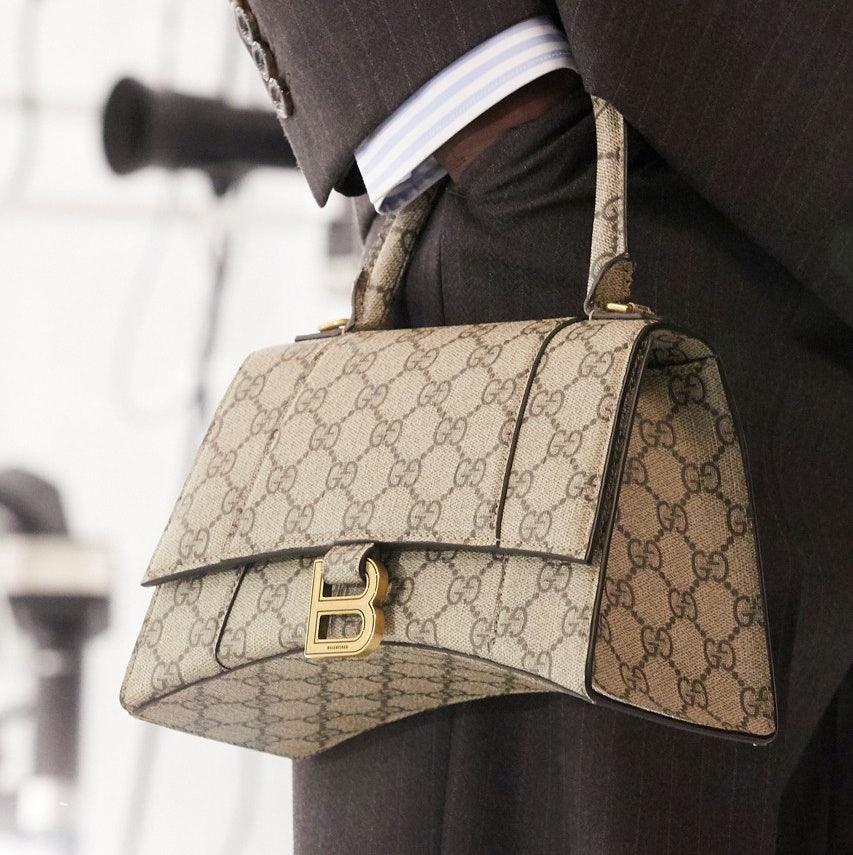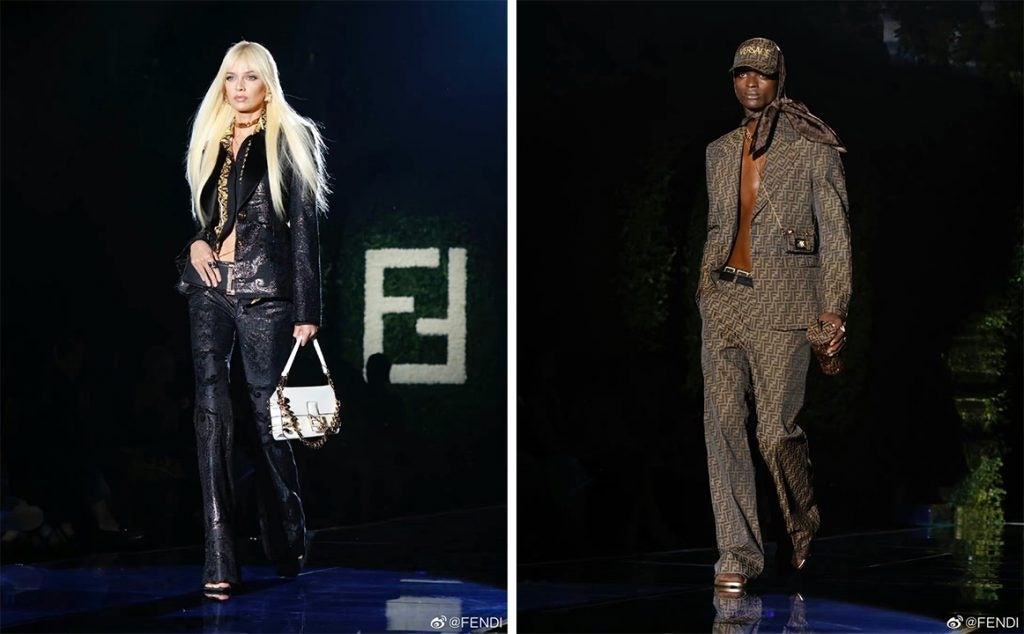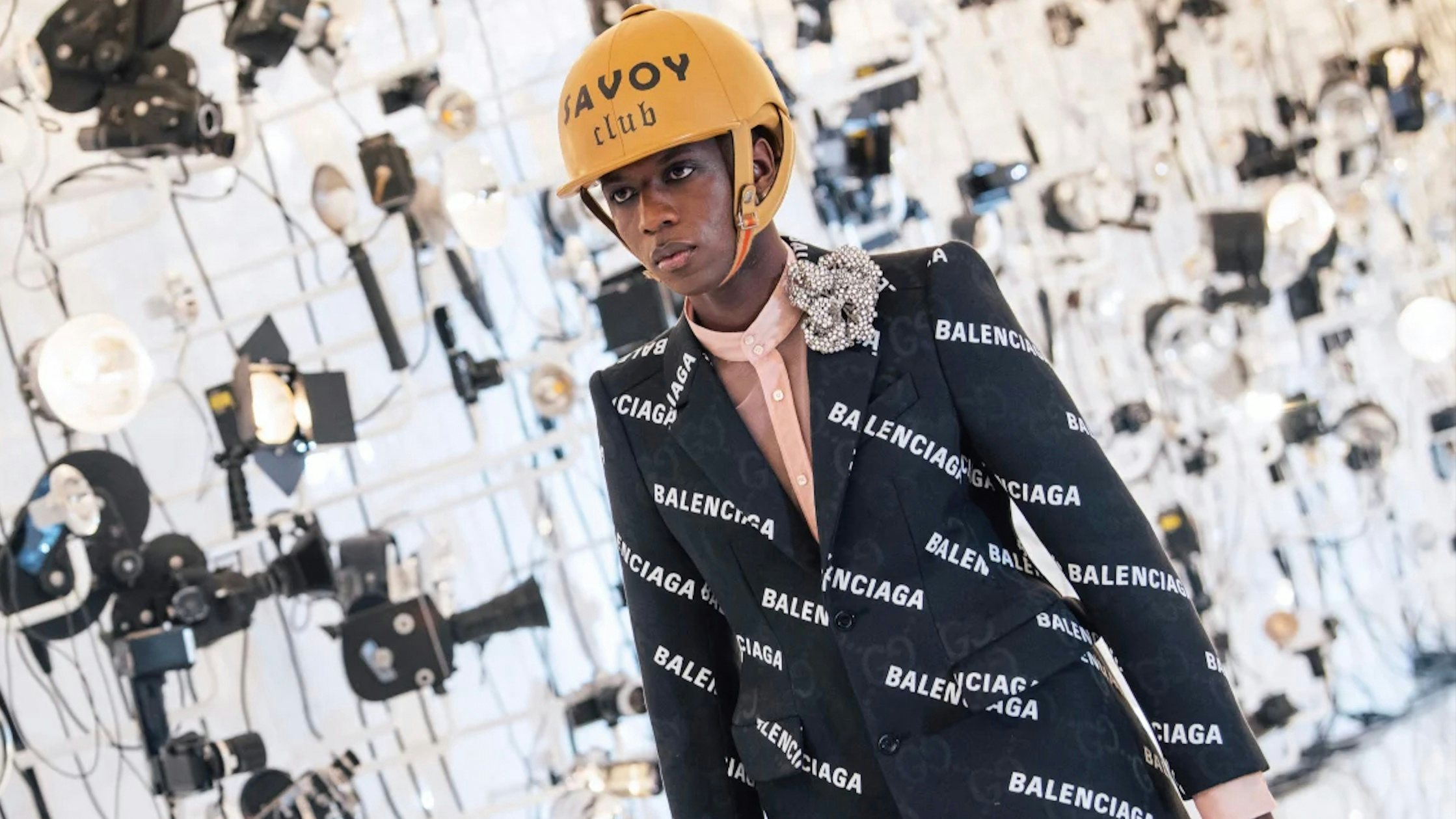Key Takeaways:#
The hashtag #GucciAria hit nearly 1 billion views on Weibo, and Fendace reached an impressive 80 million netizens in total.
The latest Lyst index showed that the surprise “Fendace" collaboration, dropped during Milan Fashion Week, helped both brands move up two spots on its ranking, to eighth and ninth place, respectively.
- In the future, more brands are likely to follow suit. Perhaps Diovuitton, Saint Veneta, and Chaneprada will happen one day?
A Gucci monogrammed handbag made in Balenciaga‘s iconic hourglass shape is revolutionizing fashion. Is it Gucci or Balenciaga? Actually, it’s both.
Today, “The Swap” and “Hacking Lab” have become two key terms driving 2021 fashion. So it's no wonder they are inspiring mega-collabs like “Gucciaga” and “Fendace.”

For Gucci’s centenary this year, the house joined hands with an unexpected partner to create its 100th-anniversary “Aria” collection: high-fashion rival Balenciaga. Meanwhile, at Milan Fashion Week, Kim Jones and Donatella Versace swapped their roles, with Kim designing for Versace’s collection and Donatella helming Kim’s Fendi.
These two “couplings” sent the internet into a virtual meltdown, with the hashtag #GucciAria hitting nearly 1 billion views on Weibo, while Fendace reached an impressive 80 million netizens in total. Kudos to these brands, which chose to go above and beyond to attract China's newness-driven Gen Zers.
On the phenomenon, Ashley Dudarenok, founder of the China trend-watching company ChoZan, wrote: “The high-low mixing of brands is old hat by now. But a combination of two luxury brands is nearly unheard of."
Overall, however, consumer reactions were mixed. Some believed it was simply a marketing stunt and even found them “ugly,” yet others saw them as great values.
Meanwhile, the new collaboration model has sparked much excitement on Weibo. Netizens called for other luxury partnerships like Louis Vuitton x Dior (Diovuitton), Bottega Veneta x Saint Laurent (Saint Veneta), and Chanel x Prada (Chaneprada).
In light of these unprecedented partnerships, Jing Daily spoke to Chinese students and analysts alike, intending to learn whether these initiatives can win over customers.
Will brands cash in on these “collaborations of the century?”#
The marketing stunt “collaboration of the century” has caught consumer attention, and the idea of buying one item and getting two brands sounds attractive to Gen Zers. James Hebbert, the managing director at Hylink UK, says that, for Chinese consumers, one plus one is greater than two separately: “The two collections are designed specifically with Gen Z in mind.” But the real question is: Will they pay for it?
Of the two, Gucciaga was better received than Fendace in online traffic and positive reactions. As mentioned, the former had ten times more views than the latter, which is likely to translate into sales. Gucci-lover Joey Sheng fits the profile of a target shopper. The Hong Kong-based college student is already considering buying a Gucciaga choker and other items. “I would accept a 20-percent markup compared to the brands’ usual price points,” he said.

Missing the analyst forecast of 9.3-percent year-on-year sales growth, Gucci reported a disappointing third-quarter with only 3.8 percent growth. But the Italian house is hoping to gain a boost with its “hacked collection.”
Jean-Marc Duplaix, the chief financial officer of Kering, said on a conference call that “Aria is receiving a very good response in the market, whatever the region, and in China, we see a rebound that I will not quantify.”
But aside from the hype, do these collaborations make sense? Luxury consumer and Xiamen-based college student Vivian Chen told Jing Daily that the Aria collection perfectly fit in with both Gucci and Balenciaga’s DNA, unlike the Fendace. “When I learned of Fendi’s partnership with Versace," she said, "and I was like... ‘Again?’ My friends and I didn’t like Fendace’s pieces.” Nevertheless, brands that pioneer the concept can have an advantage over those that follow suit.
In fact, the exclusive capsule may not help luxury houses acquire new consumers but will certainly help them retain their younger cult buyers. Shopper Sheng and analyst Hebbert agreed that each brand's loyal customers were likely to purchase collaborations since they see them as “collectible” pieces.
It is Dudarenok’s opinion that “Gen Z shows a higher preference for designer editions and cross-brand collaborations.” In fact, from January to October 2020, Gen-Z spending on co-branded and limited-edition luxury items increased by 300 to 400 percent, meaning Gen Z will definitively account for the majority of these collaboration buyers.
On balance, these cross-brand collaborations will allow both parties to access each other's customers, at least for a while. But is that risky for brands? Probably, but it is perhaps worth the risk to be considered “hype” by Gen-Z consumers and again the chance to accelerate growth — even in the short-term.
What are the repercussions for these brand collaborations?#
Today, collaborations have become a favorite marketing tactic for reaching a broader audience, testing new markets or categories, and potentially boosting revenue. For example, Gucci recently announced another tie-in with COMME des GARÇONS for a series of tote handbags to be released on Gucci’s Vault platform on October 15. “In the social listening report of crossover marketing, praise accounts for 72 percent of the emotional distribution, indicating that the public is still optimistic about crossover marketing,” Dudarenok explained.
The latest Lyst Index, which measures a brand's online popularity, showed the surprise “Fendace” collaboration, dropped during Milan Fashion Week, helped both brands move up two spots on the ranking, taking eighth and ninth place, respectively. Meanwhile, Balenciaga has replaced Gucci as the most searched brand on Lyst, climbing up five spots (which sound less like a win-win scenario).

In fact, more and more barriers to collaboration capsules are appearing. With the normalization of collaborations, consumers now have higher expectations and demands. Plus, co-branding can be risky for companies, as “they can eat up their competition,” said Hebbert. Particularly in these cases, brands can have a collision of styles and may lose their identities.
By over-relying on collaborations, cult consumers get alienated from the brand’s legacy and DNA. Hebbert warned, “It is important to choose the right partner and modality to prevent diluting your brand image." But he also added that “cross-category collaborations are more sustainable in the long term.”
Where brands can win in the long term#
It is foreseeable that more brands will follow suit. Diovuitton, Saint Veneta, and Chaneprada may one day exist once the practice becomes more common. Nonetheless, collabs are still “hype,” meaning they create short-term instant buzz.
Beyond luring newness-driven Gen Zers, luxury brands should start re-educating the segment about their heritage, as that is where luxury brand values lay, and reviving it means they will always be able to win. Designs can easily get copied, but a brand’s history cannot. Many local consumers still need to be taught that lesson.
So, until we have Diovuitton, cultural hubs like Prada’s Rong Zhai or exhibitions like Ports1961’s “Time Traveler” and Dior’s “ART’N DIOR” can immerse consumers in a brand journey, emotionally connecting them through backstories. That is how strong relationships get built: helping fans understand the value behind the items they purchase.


